Thomas Jefferson and the Maison Carrée
Today, Thomas Jefferson in love. The Honors College at the University of Houston presents this program about the machines that make our civilization run, and the peoplewhose ingenuity cre-ated them.
It's 1787 and Thomas Jefferson is in Southern France. He writes to a friend, confessing that he is smitten. He spends long hours gazing at'a building. 'Here I am, Madam, gazing whole hours at the Maison Carrée, like a lover at his mistress.' So what is this building, and why is he so obsessed with it?
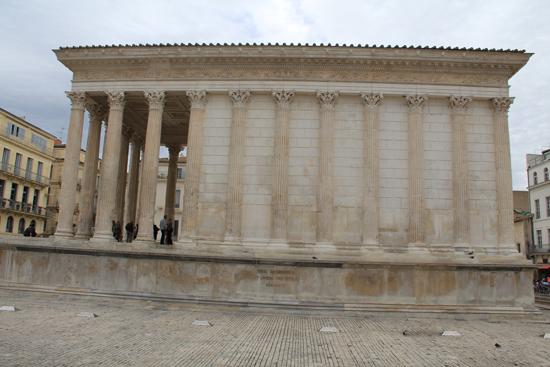
Photo by R. Armstrong
The Maison Carrée or 'Square House' is the best preserved Roman temple in Europe. It sits undisturbed in the small city of Nîmes, which also has a splendid Roman amphitheater, still used for bull-fighting and other spectacles. This temple is not as impressive as the Parthenon of Athens, nor as sublime as the towering dome of the Pantheon in Rome. But it retains an integrity in its design, and preserves much of its original ornamentation, unlike so many ancient buildings that have been repurposed through the ages.
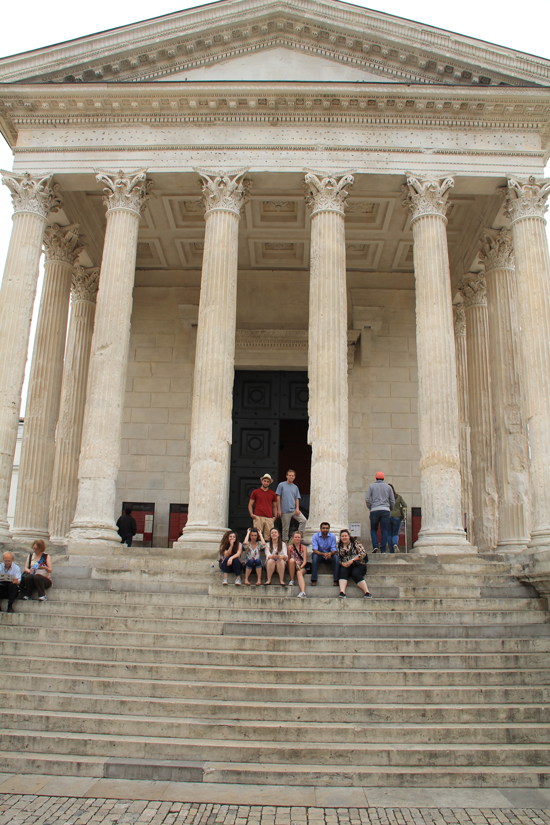
UH students at Main Carrée, Photo by R. Armstrong
Jefferson was hungry for pristine examples of classical building. He was convinced that architecture is foundational to the taste of a nation. The new nation of America was in dire need of public buildings that sent the right kind of message. There was little impressive architecture at the time on this side of the Atlantic. Aping the palaces of Versailles or Vienna would be wholly inappropriate for the fledgling Republic. So like many Enlightenment thinkers of the time, Jefferson turned to antiquity for models uncorrupted by royal extravagance or gothic exaggeration.
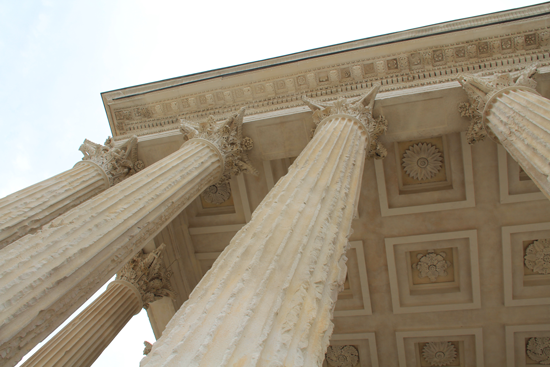
Details from the front portico. Photo by R. Armstrong
But the Maison Carrée was not a pristine example of Roman Republican architecture. It was built during the reign of Augustus, Rome's first emperor; that is, after the Romans had lost their Republican liberty. In fact, the temple had an inscription memorializing Augustus' grandsons, Gaius and Lucius Caesar, whom the emperor had adopted as his hopeful heirs. They died, however, and did not succeed him. But the dedication of this temple means the building may have been a site of imperial cult: the worship of the Emperor and his family.
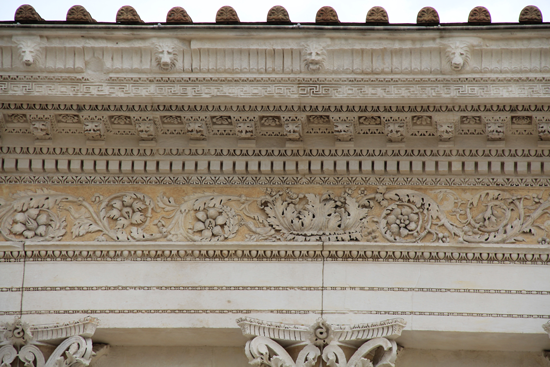
Details of the Entablature. Photo by R. Armstrong
Is it ironic that Jefferson should revere a temple dedicated to the imperial family? Not if we see what he did with his infatuation. Jefferson wasn't interested in merely copying, but rather in adapting a classical style to a new context: namely for the Virginia State Capitol, home of the oldest legislative body in the western hemisphere.
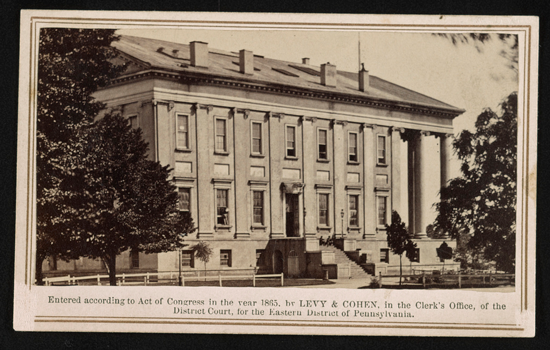
Virginia Capitol seen from West side in 1865. Photo by Levy & Cohen, Library of Congress
Together with French architect Charles Cl'risseau, Jefferson reinterpreted the ancient Roman temple in terms of a civic architecture for government by the people. An ancient temple was a dark construction, housing a central image of the god worshipped there. But Jefferson put in windows in his version, flooding the interior with light. He used the rectangular form to house a warren of rooms for the activities of three branches of government. It was not to be a temple to revere George Washington or James Madison or even himself. It was a vital, active space, a place to do the people's business.
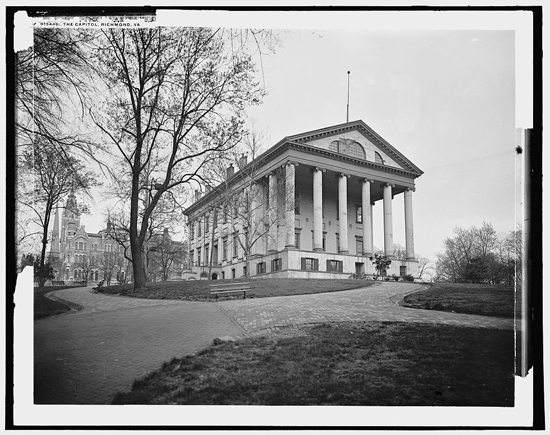
Virginia Capitol seen from the front in 1901. Photo by William Henry Jackson. Library of Congress
Jefferson took what was eternal and useful from the Roman Empire, and repurposed it for a new nation. Thus he did something rational and revolutionary at the same time. His classical statehouse provided, in his own words, 'a morsel of taste in our infancy promising much for our maturer age.'
I'm Richard Armstrong, at the University of Houston, where we're interested in the way inventive minds work.
(Theme music)
Amy, Robert and Pierre Gros. 1979. La Maison Carrée de Nîmes (XXXVIIIe supplément à Gallia). Paris: Éditions du CNRS. 2 vols.
Giordano, Ralph G. 2012. The Architectural Ideology of Thomas Jefferson. Jefferson, N.C: McFarland & Co.
McCormick, Thomas J. 1990. Charles-Louis Clérisseau and the Genesis of Neo-Classicism. Cambridge, Mass.: MIT Press.
Long before seeing the building, Jefferson knew of the Maison Carrée from this important publication of Clérisseau:
Les Antiquités de la France, Première Partie (Les monumens de Nismes)[sic]. Paris, 1778.
Note: The Maison Carrée has traditionally been dated to the early first century CE on the basis of a reconstructed dedicatory inscription to Gaius and Lucius Caesar. For a radical revision of its date of construction, see James C. Anderson, Jr., 'Anachronism in the Roman Architecture of Gaul: The Date of the Maison Carrée at Nîmes,' Journal of the Society of Architectural Historians 60:1 (2001):68-79.
This episode first aired on October 22, 2014.